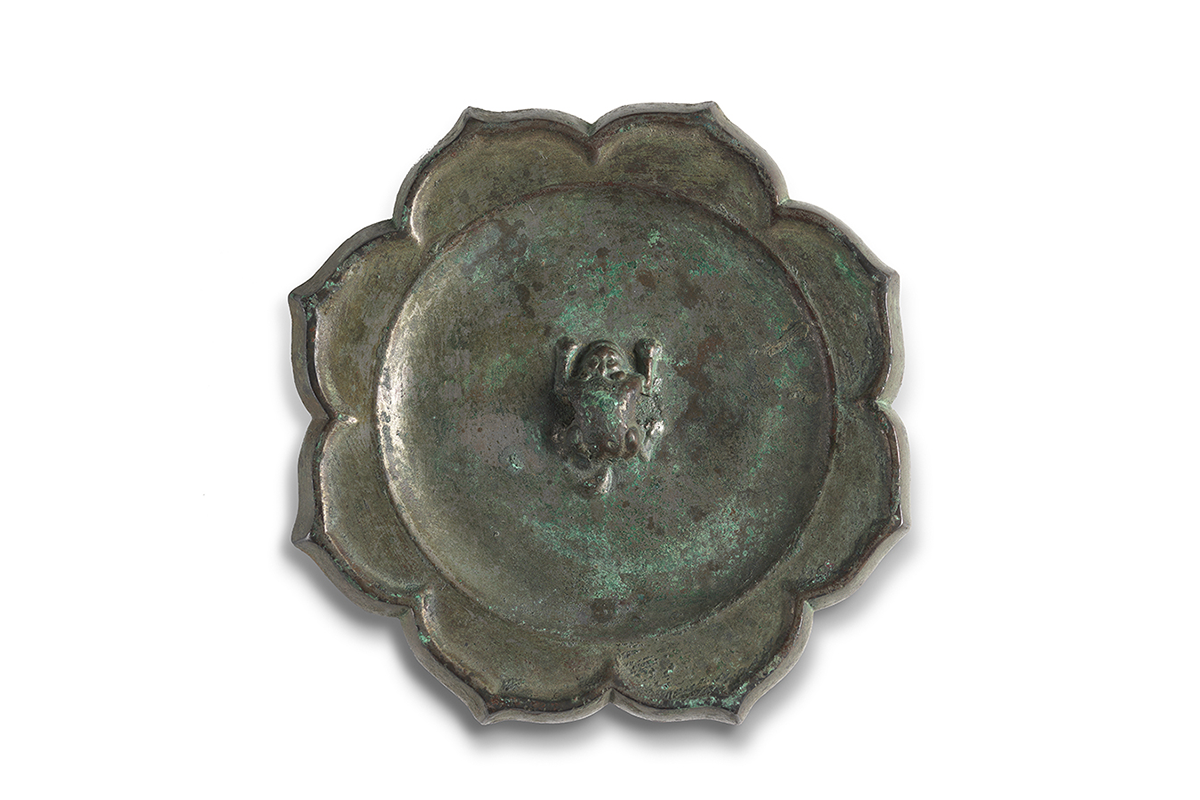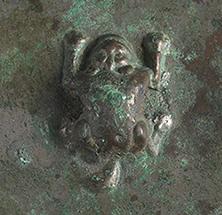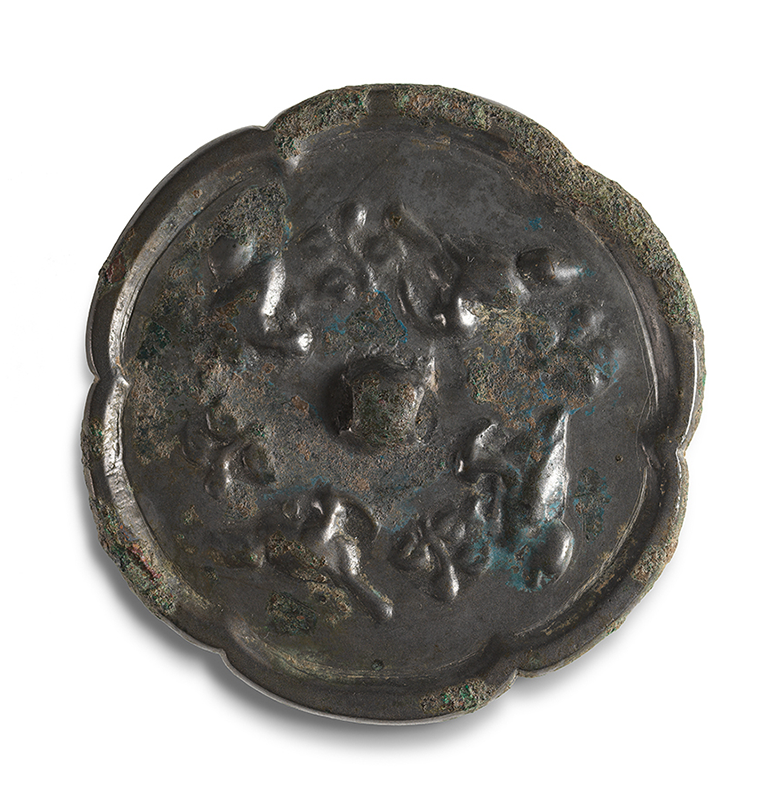
From Form to Symbol: An Aesthetic and Cultural Interpretation of a Tang Dynasty Mirror
Gengwei Guo (he/him) is a second-year M.A. student specializing in Chinese painting and calligraphy at UMass Amherst. His current research interests include Ming and Qing dynasty bird-and-flower painting, Qing dynasty material culture, and women artists of the Qing period.
The Tang Dynasty (618-907 CE) marked the heyday of Chinese mirror-making, with advancements in bronze casting and decorative techniques clearly manifested in bronze mirrors. These objects were not only prized social gifts, serving both ceremonial and sociable functions, but also indispensable toilet implements, intimately bound to everyday life. Artisans placed particular emphasis on their production, meticulously casting and embellishing mirrors with a spirit of innovation. Precisely because of their close connection to social life, the imagery on bronze mirrors was deeply entwined with the social structure, ideology, culture, and fashions of the time, thereby affirming their significance in the history of Chinese art and culture.
In terms of form, Tang Dynasty bronze mirrors departed from the traditional round and square shapes of earlier periods. At the height of Tang culture, a variety of innovative styles emerged, the most representative being the petal-lobed mirror. The undulating, petal-like rims of these mirrors appear elegant and rhythmically balanced, reflecting the Tang artisans’ ability to absorb and transform natural forms into design. This endowed bronze mirrors with a decorative and artistic dimension that transcended mere utility.
This petal-lobed mirror, now in the collection of the Smith College Museum of Art, measures approximately five inches in diameter. Its overall shape evokes a blossoming flower, with a vivid frog-shaped knob at the center (Fig. 1). Functionally, the knob facilitated hanging and holding. Symbolically, the frog was regarded in ancient Chinese culture as an emblem of fertility and reproduction, associated with fecundity and familial prosperity. Thus, the mirror’s design not only fulfilled a practical purpose but also embodied the Tang people’s aspirations for continuity of life and the flourishing of their lineage.

Fig. 1. Detail of the frog-shaped central knob.
Unlike some Tang Dynasty bronze mirrors with elaborate ornamentation, this petal-lobed example adopts a restrained decorative scheme, lacking inscriptions or complex patterns. Its very form and central knob reinforce symbolic meaning, while the copper surface, bearing a green patina acquired over time, lends the object a sense of historical gravitas. This deliberate simplicity directs attention to the symbolic resonance of the frog knob and the petal-shaped design.
Regarding the naming of this type of mirror, the term Linghua Mirror (菱花鏡, literally “petal-lobed mirror”) appears frequently in Tang Dynasty literature and poetry. The poet Liu Yuxi (772-842 CE) wrote: “Take the Linghua mirror, tempered a hundred times, and trade it for a bamboo-leaf wine cup that endures a hundred days,” referring to a mirror with a petal-lobed form. Similarly, the poet Xue Feng (806-874 CE), in his Song of the Ancient Mirror of My Brother in Lingtai, noted: “By midday, the Linghua gradually opens into bloom,” using the flower metaphor to evoke the mirror’s radiance. This dual resonance rendered the Linghua mirror not only a formal innovation but also a poetic emblem of cultural significance in the Tang Dynasty.
A closely related form to the petal-lobed mirror is the sunflower-shaped mirror 葵花鏡 (Fig. 2), which also emerged during the height of the Tang Dynasty. The petal-lobed type, however, appeared and gained popularity somewhat earlier than the sunflower-shaped example.

Fig. 2. Six-lobed Mirror with ducks, bronze, 2 ¼ inch. in diameter, SC 2017.12.25
The rise of these two mirror forms signaled the liberation of Tang mirror-making from the constraints of traditional circular and square shapes, opening a new realm of artistic freedom inspired by natural forms and balancing realism with decoration. The petal-lobed mirror particularly epitomizes this transformation. With its rhythmic petals and symbolic frog knob, it transforms a utilitarian object into a cultural emblem imbued with vitality and poetic resonance. This not only demonstrates the artistic creativity of Tang society at its height but also embodies the Tang aesthetic ideal of integrating nature, the cosmos, and daily life.